Art Deco architecture emerged in the 1920s and 1930s, symbolizing glamour, modernity, and the machine age. Characterized by its bold geometric patterns, symmetrical designs, and luxurious materials, this style remains a hallmark of timeless elegance. An Art Deco house exterior makes a powerful statement, combining streamlined forms with ornate, stylized details. From stepped rooflines reminiscent of ancient ziggurats to sleek, curved walls inspired by ocean liners, the possibilities for creating a sophisticated and visually stunning facade are vast. Exploring these ideas can transform a home into a masterpiece of historical yet futuristic design.
1. Art Deco House Exterior with Symmetrical Facades
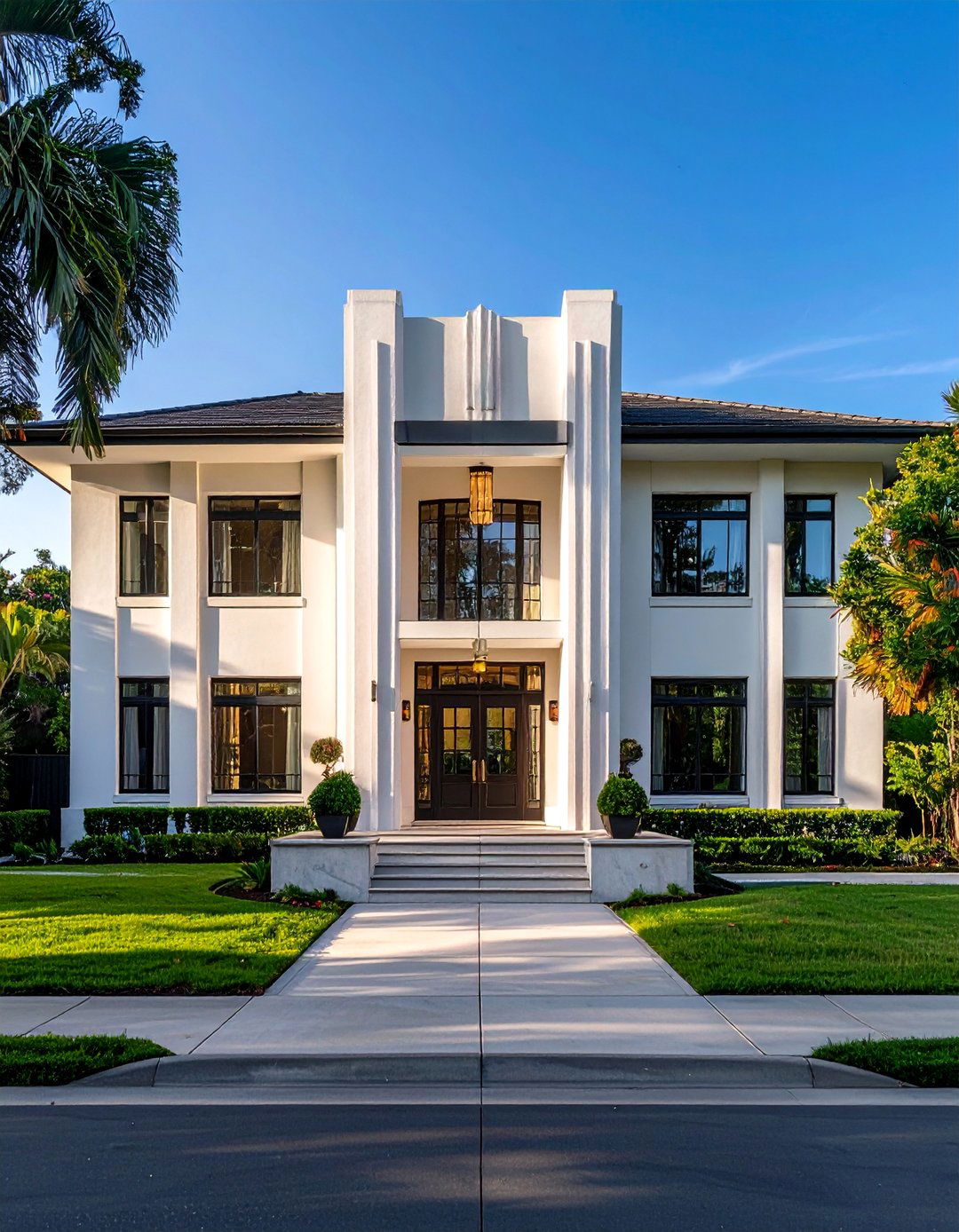
Symmetry is a cornerstone of the Art Deco aesthetic, creating a sense of balance, order, and grandeur. An Art Deco house exterior designed with perfect symmetry often features a central entryway flanked by identical sets of windows, wings, or decorative elements. This balanced arrangement draws the eye inward, emphasizing the home's main entrance as a focal point. Vertical lines are often used to enhance the feeling of height and prestige. The use of materials like smooth stucco or concrete further accentuates the clean, geometric lines, resulting in a facade that is both imposing and harmoniously elegant, reflecting the structured opulence of the era.
2. Art Deco House Exterior with Ziggurat Rooflines
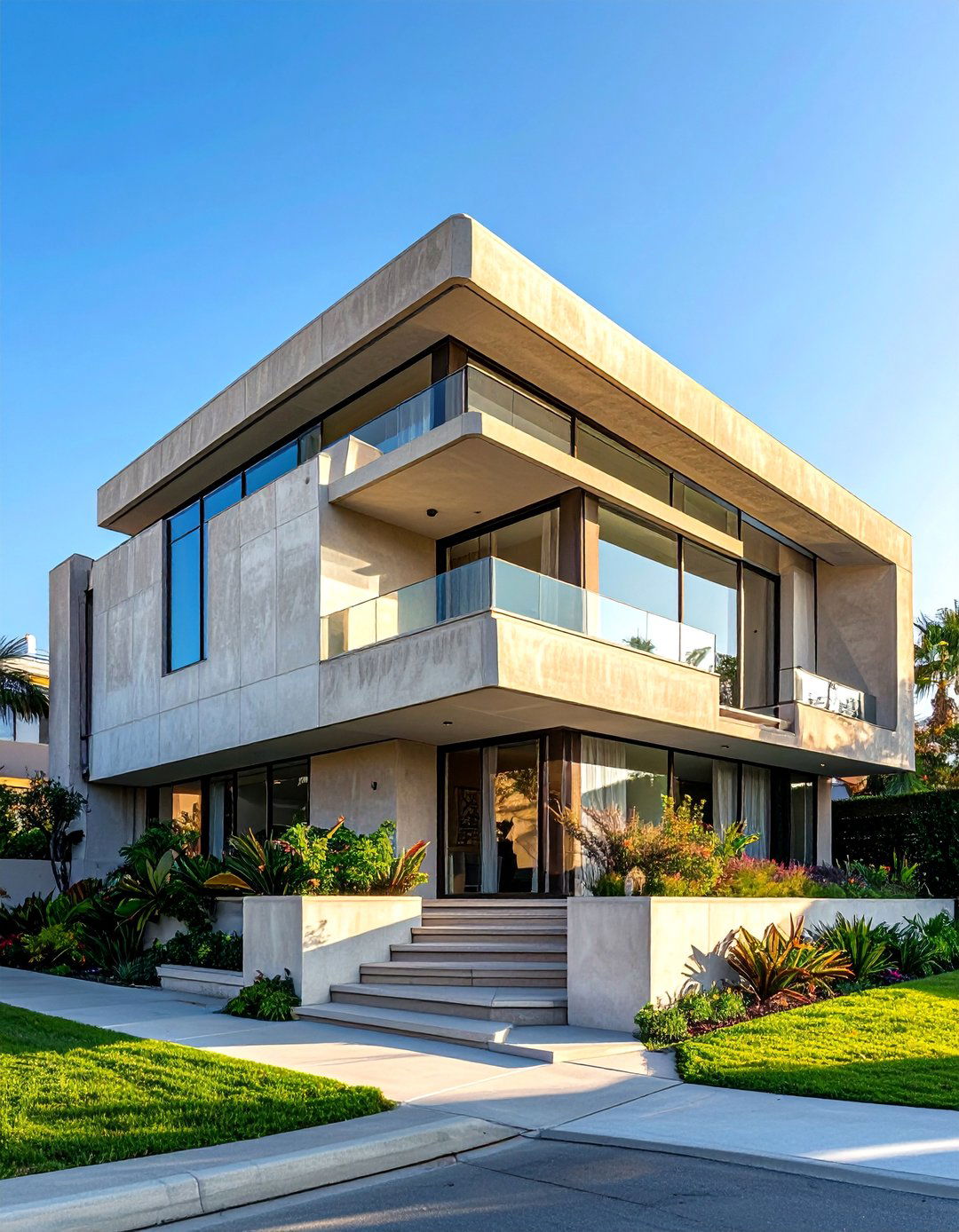
Inspired by ancient Mesopotamian temples, ziggurat-style stepped rooflines are a dramatic and iconic feature of Art Deco house exteriors. This design involves multiple stacked, receding levels, creating a terraced or pyramid-like effect that draws the eye upward. The angular, geometric quality of the ziggurat perfectly captures the Art Deco fascination with monumental forms and historical motifs reinterpreted for the modern age. This architectural element not only adds visual interest and a sense of grandeur but also breaks up the traditional flat roofline, creating a dynamic silhouette against the sky. It’s a bold declaration of style that is unmistakably Art Deco.
3. Art Deco House Exterior with Streamline Moderne Curves
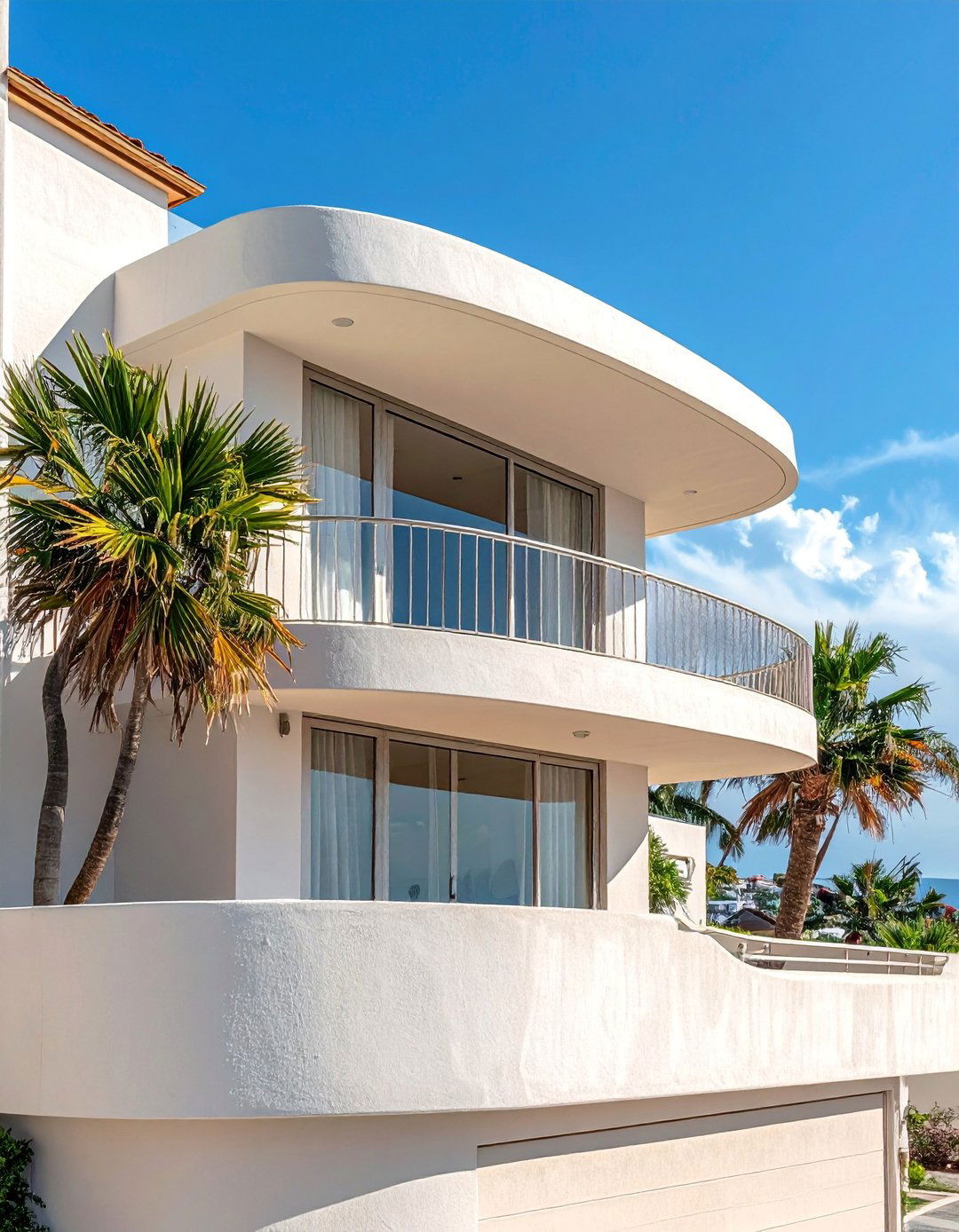
Emerging later in the Art Deco period, the Streamline Moderne style introduced soft, aerodynamic curves inspired by ships, planes, and trains. An Art Deco house exterior can incorporate these elements through rounded corners, curved walls, and sweeping cantilevered balconies. This approach softens the sharp angles typically associated with the style, creating a fluid and futuristic look. The smooth, flowing lines evoke a sense of motion and progress, celebrating the advancements of the machine age. Often finished in clean white or pastel stucco, these curved forms give the home a sleek, nautical feel that is both sophisticated and forward-thinking.
4. Art Deco House Exterior with Geometric Relief Panels
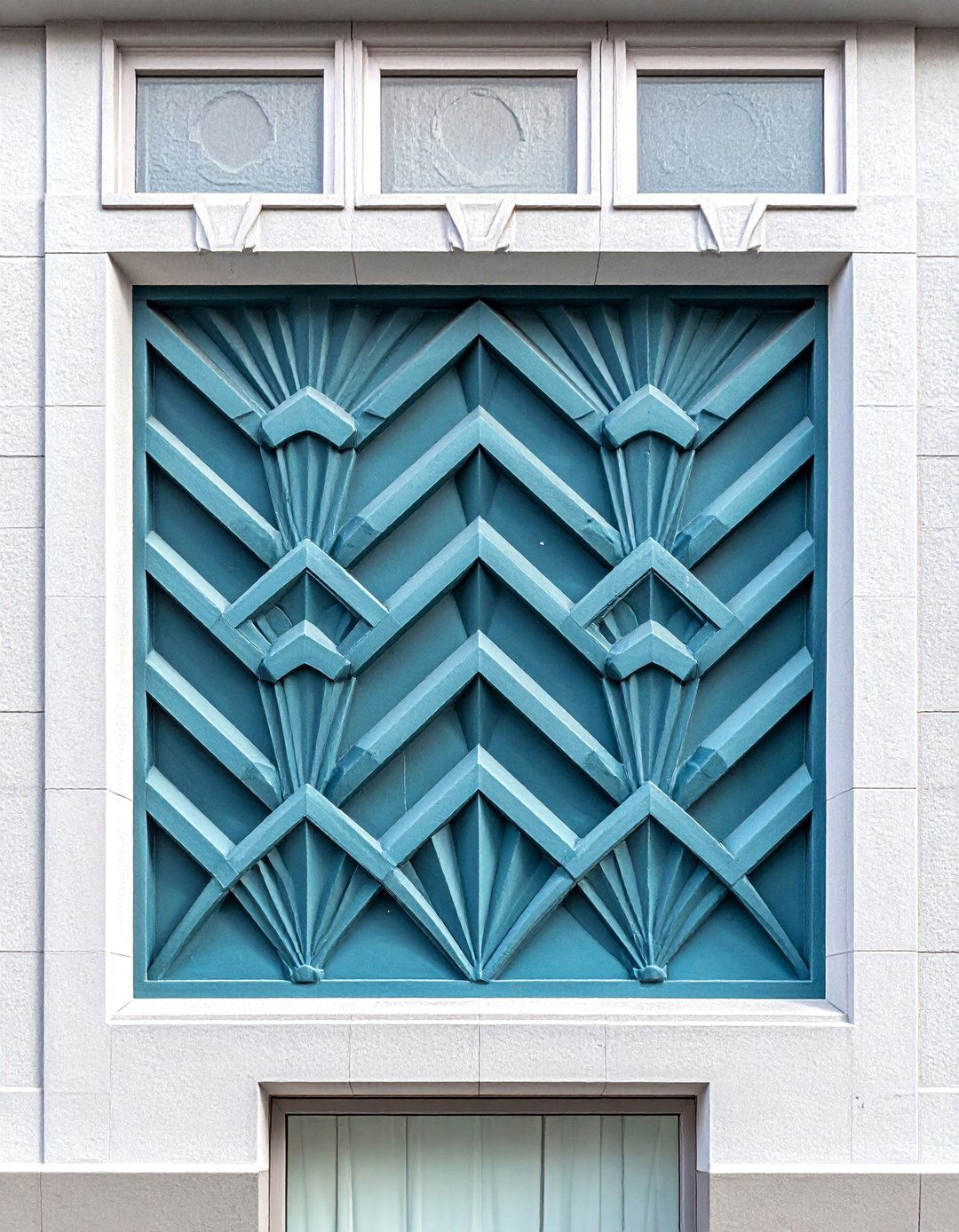
Decorative relief panels are a fantastic way to introduce intricate detail to an Art Deco house exterior. These panels, typically made of concrete, stone, or terra cotta, are set into the facade and feature low-relief carvings of classic Art Deco motifs. Common designs include chevrons, sunbursts, zigzags, stylized florals, and abstract geometric patterns. Placed strategically above doorways, below windows, or along the roofline, these decorative elements add texture and a layer of artistic sophistication. They break up the monotony of flat stucco walls and serve as beautiful focal points that celebrate the era's commitment to craftsmanship and ornamentation.
5. Art Deco House Exterior with Steel Casement Windows
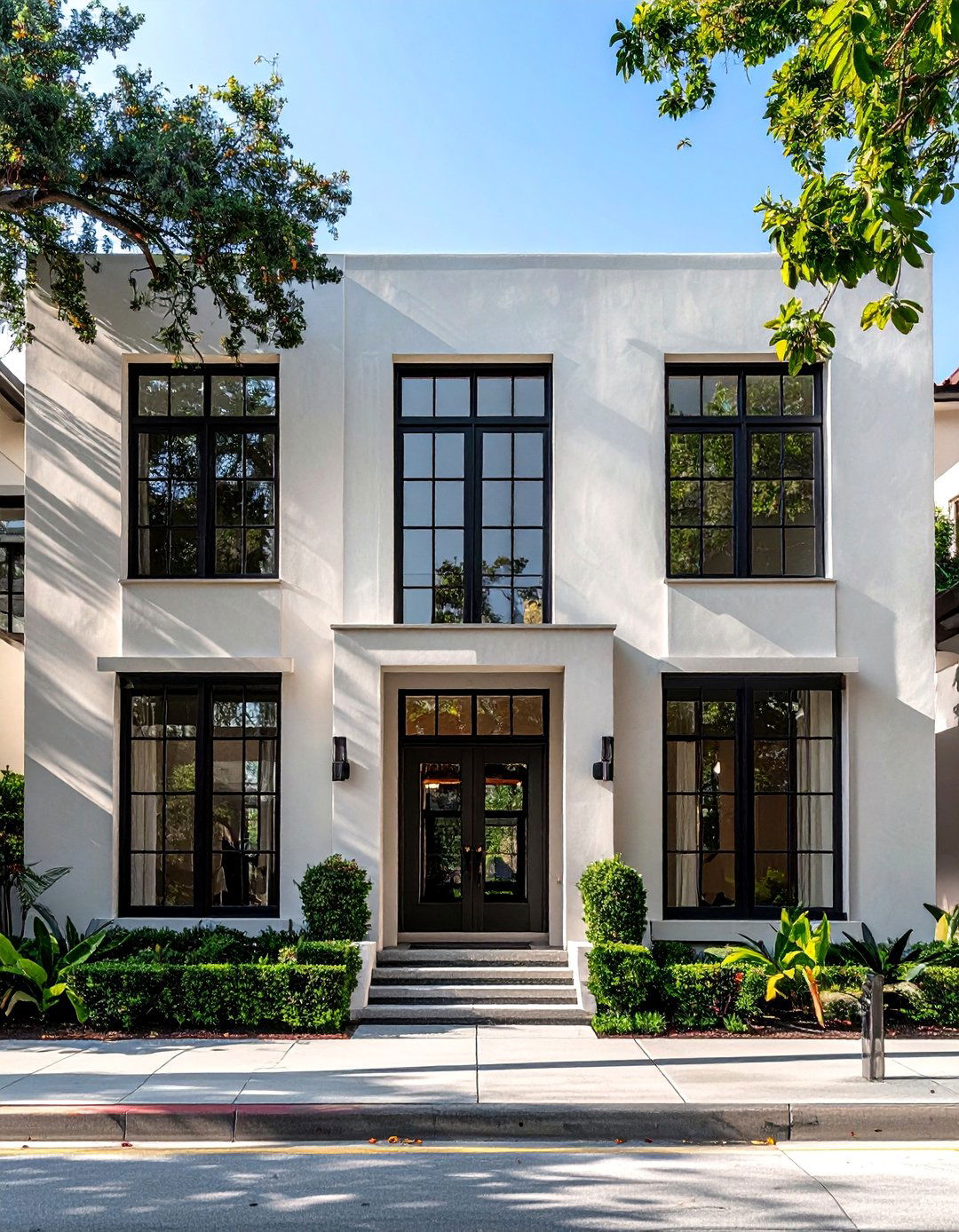
The industrial age heavily influenced Art Deco design, and this is clearly seen in the use of steel casement windows, often referred to as Crittall-style windows. An Art Deco house exterior featuring these windows boasts a sleek, modern aesthetic. Characterized by their slim black steel frames and grid-like patterns, they provide a striking contrast against light-colored stucco or brick walls. These windows not only enhance the geometric theme of the facade but also allow for expansive glass panes, flooding interiors with natural light. Their clean lines and industrial-chic appeal are a perfect complement to the style’s blend of functionality and decorative flair.
6. Art Deco House Exterior with Sunburst Motif Doorways
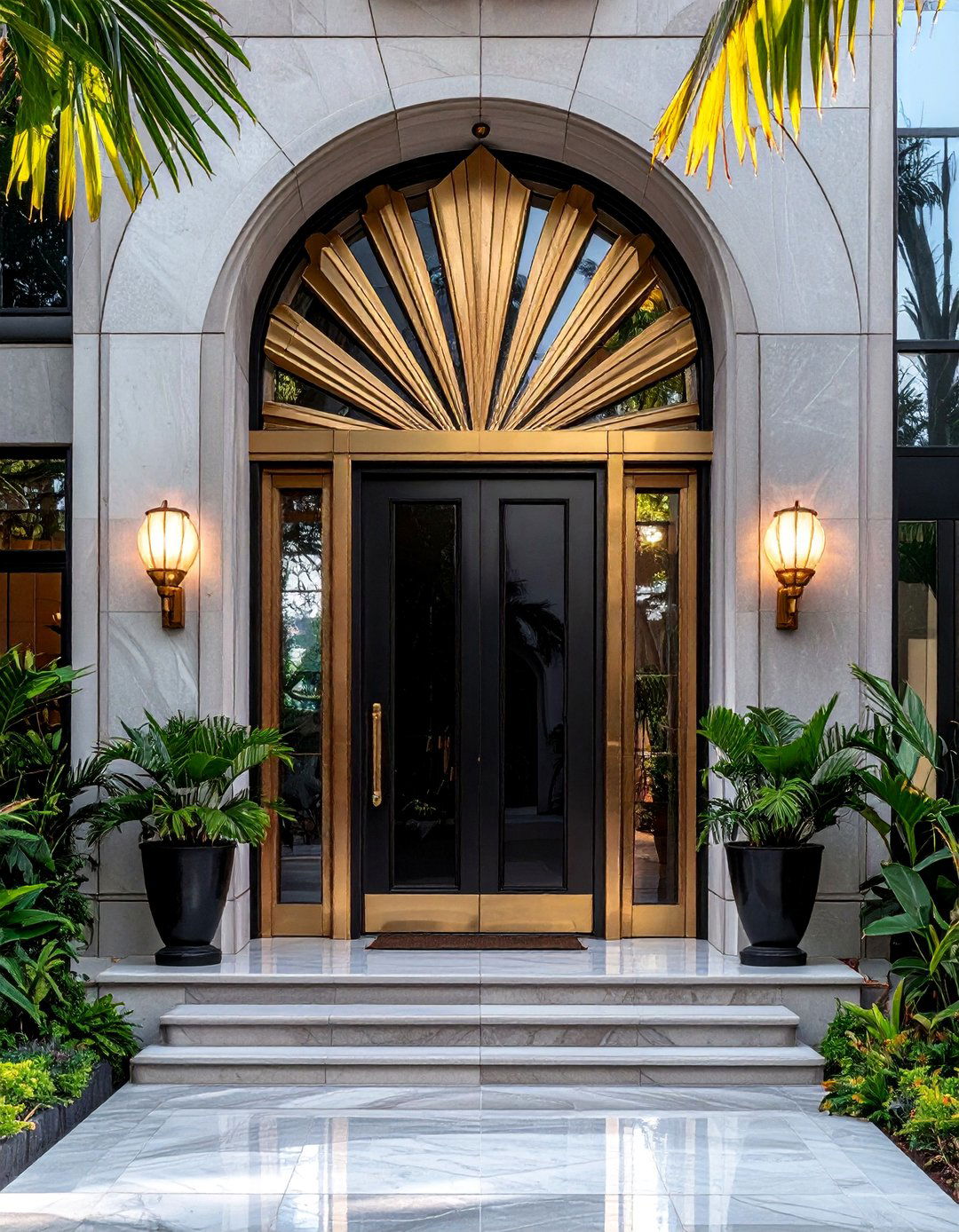
The sunburst, or sunrise, motif is one of the most recognizable symbols of the Art Deco era, representing the dawn of a new, modern age. Incorporating this design into the entryway creates a powerful and glamorous focal point for an Art Deco house exterior. This can be achieved through a carved stone or concrete door surround, a decorative glass panel above the door, or even in the design of the door itself. The radiating lines of the sunburst add a sense of energy and optimism to the facade. Paired with a bold, high-gloss door, it creates an unforgettable entrance that exudes confidence and classic Hollywood glamour.
7. Art Deco House Exterior with Glass Block Walls
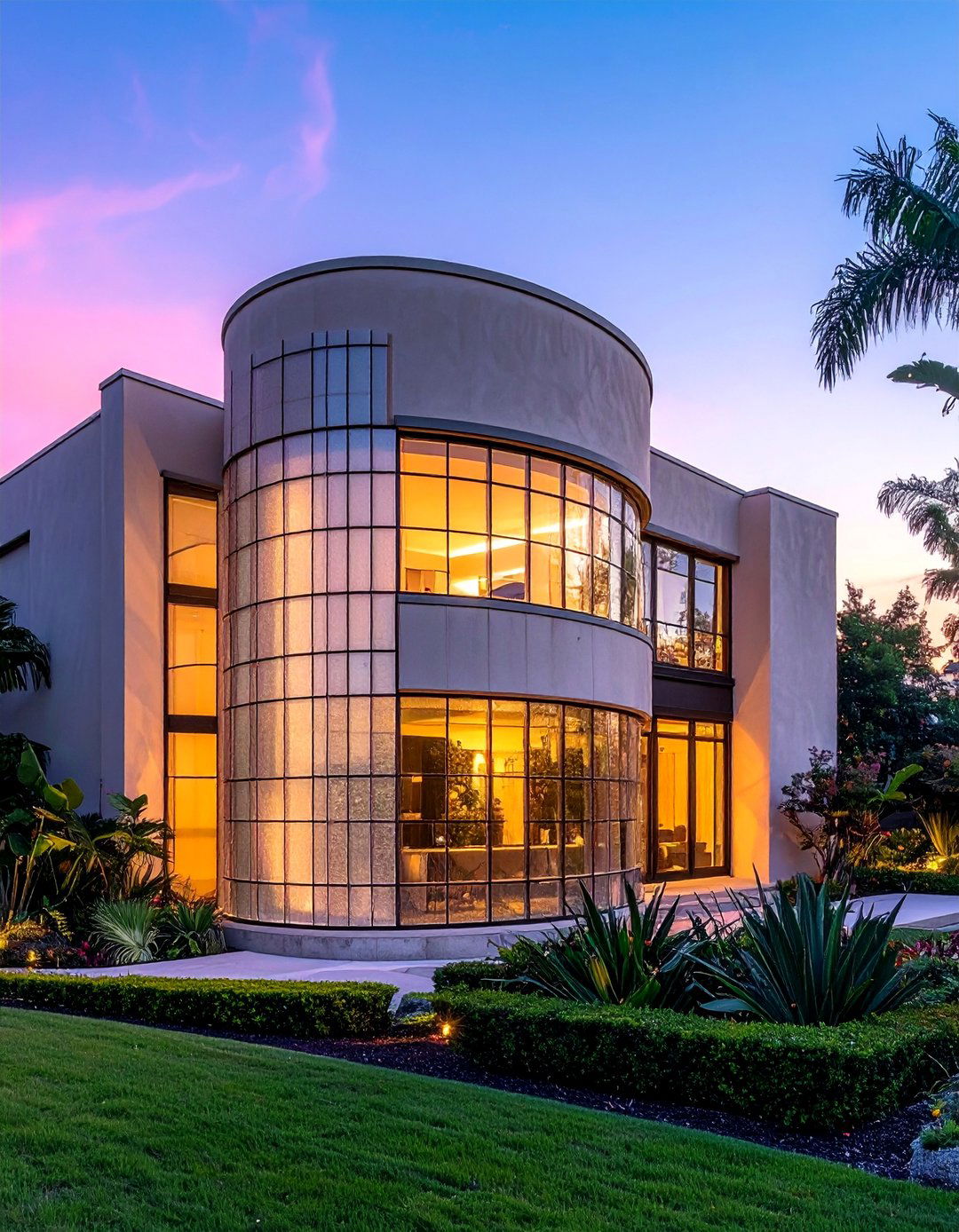
Glass blocks were a revolutionary material during the Art Deco period, celebrated for their ability to transmit light while maintaining privacy. An Art Deco house exterior can use glass blocks to create stunning architectural features. They can be used to construct entire curved walls, as sidelights flanking a front door, or as decorative accents set within a stucco facade. The translucent quality of the blocks adds a soft, diffused glow to the interior during the day and transforms the house into a luminous beacon at night. Their grid-like pattern also reinforces the geometric emphasis of the Art Deco style, blending functionality with a futuristic aesthetic.
8. Art Deco House Exterior with Bold Contrasting Colors
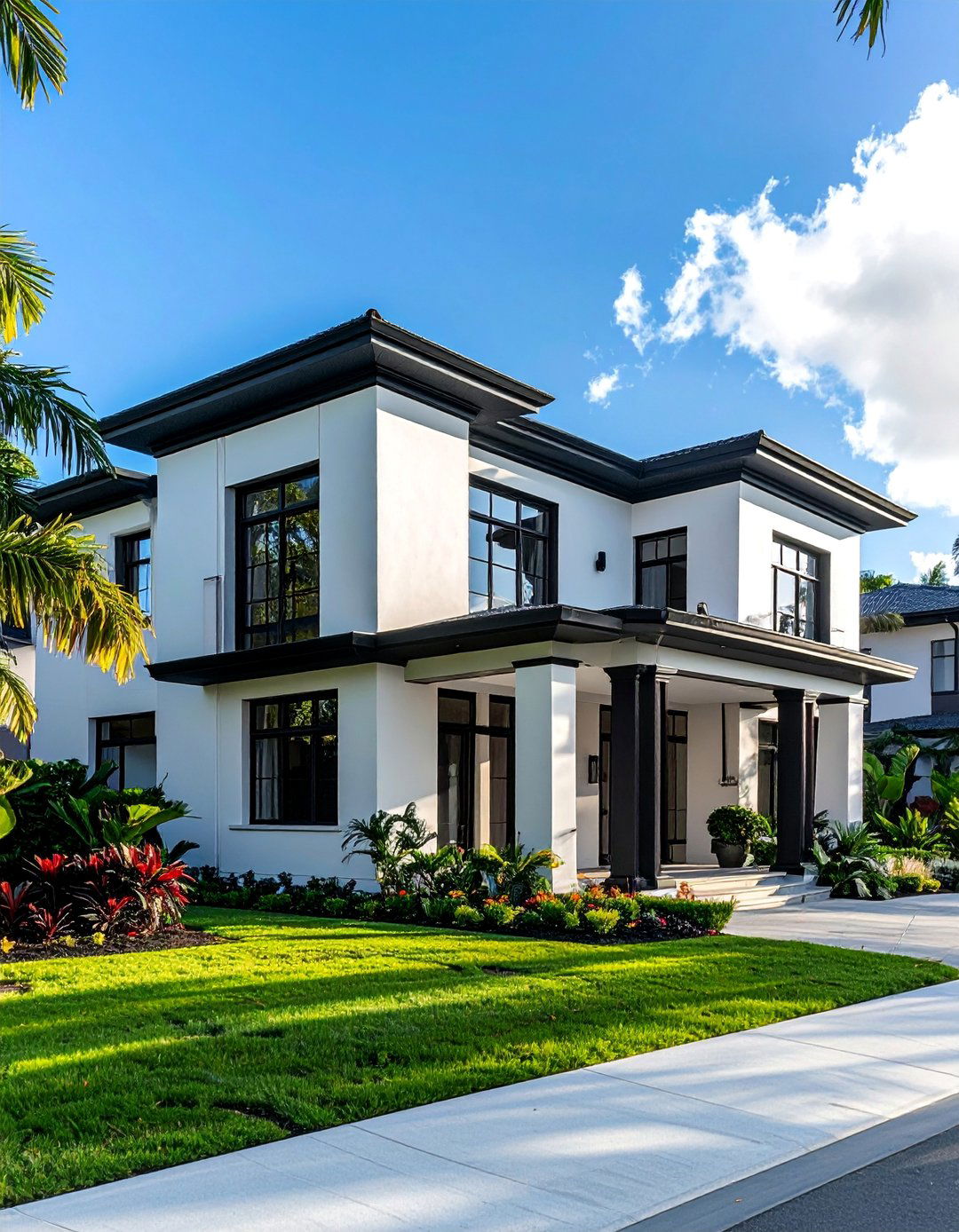
While many Art Deco homes feature monolithic white or cream facades, a bold, contrasting color scheme can create a truly striking exterior. Think of a crisp white or light gray stucco base dramatically accented with black, deep charcoal, or even a rich navy blue. These accents can be used to highlight architectural details like window frames, rooflines, vertical pilasters, and decorative panels. This high-contrast palette emphasizes the home's geometric forms and clean lines, creating a sharp, graphic quality. This approach adds a layer of visual drama and sophistication, ensuring the house stands out with a confident and polished look.
9. Art Deco House Exterior with Porthole Windows
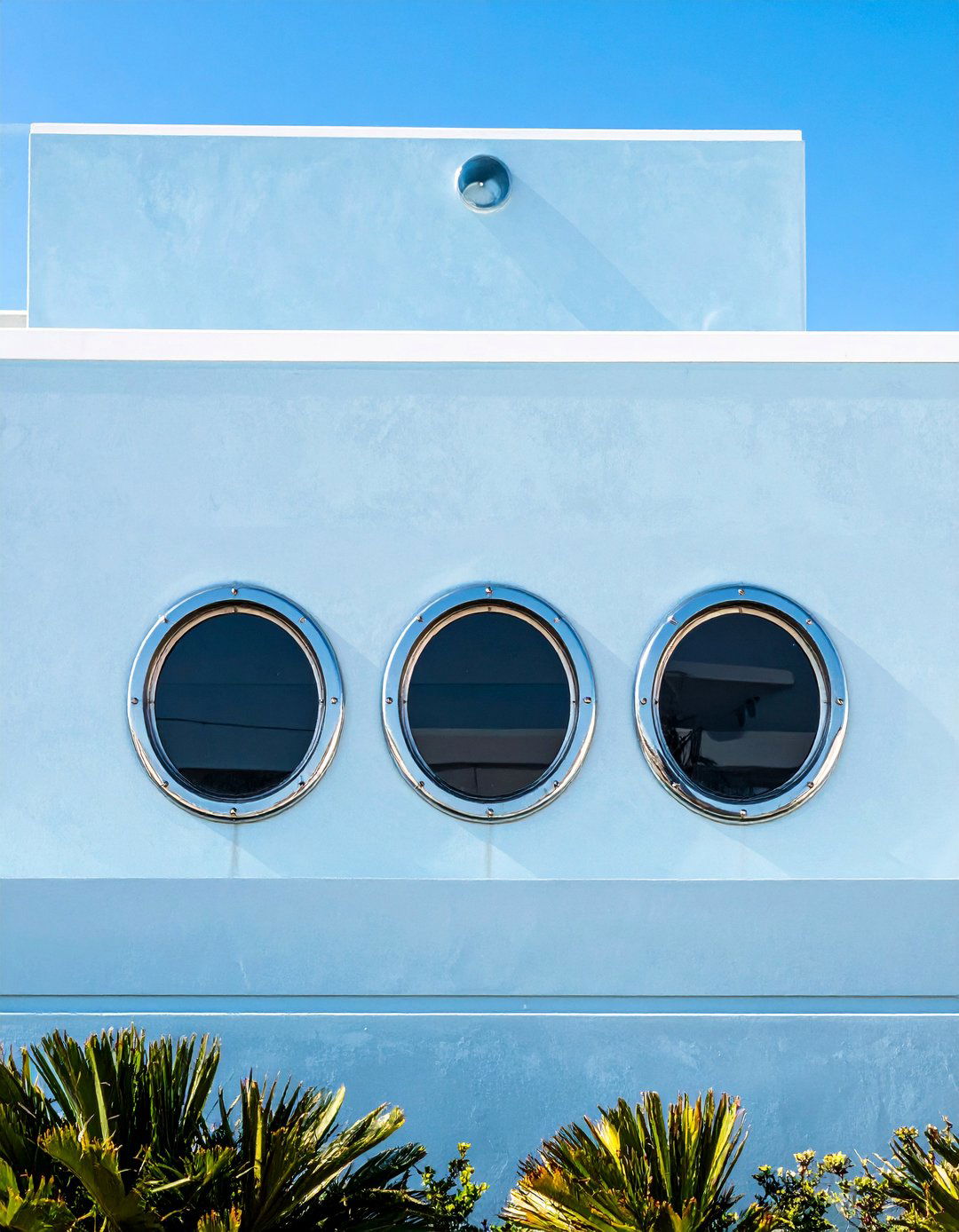
Drawing inspiration from the great ocean liners of the era, porthole windows are a charming and distinctive feature for an Art Deco house exterior. These round windows, often framed in metal or concrete, are a key element of the Streamline Moderne sub-style. They can be used as accent windows in bathrooms, hallways, or stairwells, or even arranged in a series to create a strong nautical theme. The simple, perfect geometry of the circle provides a delightful contrast to the more common angular lines of the facade, adding a touch of whimsy and maritime elegance. It’s a unique detail that captures the adventurous spirit of the 1930s.
10. Art Deco House Exterior with Decorative Parapets
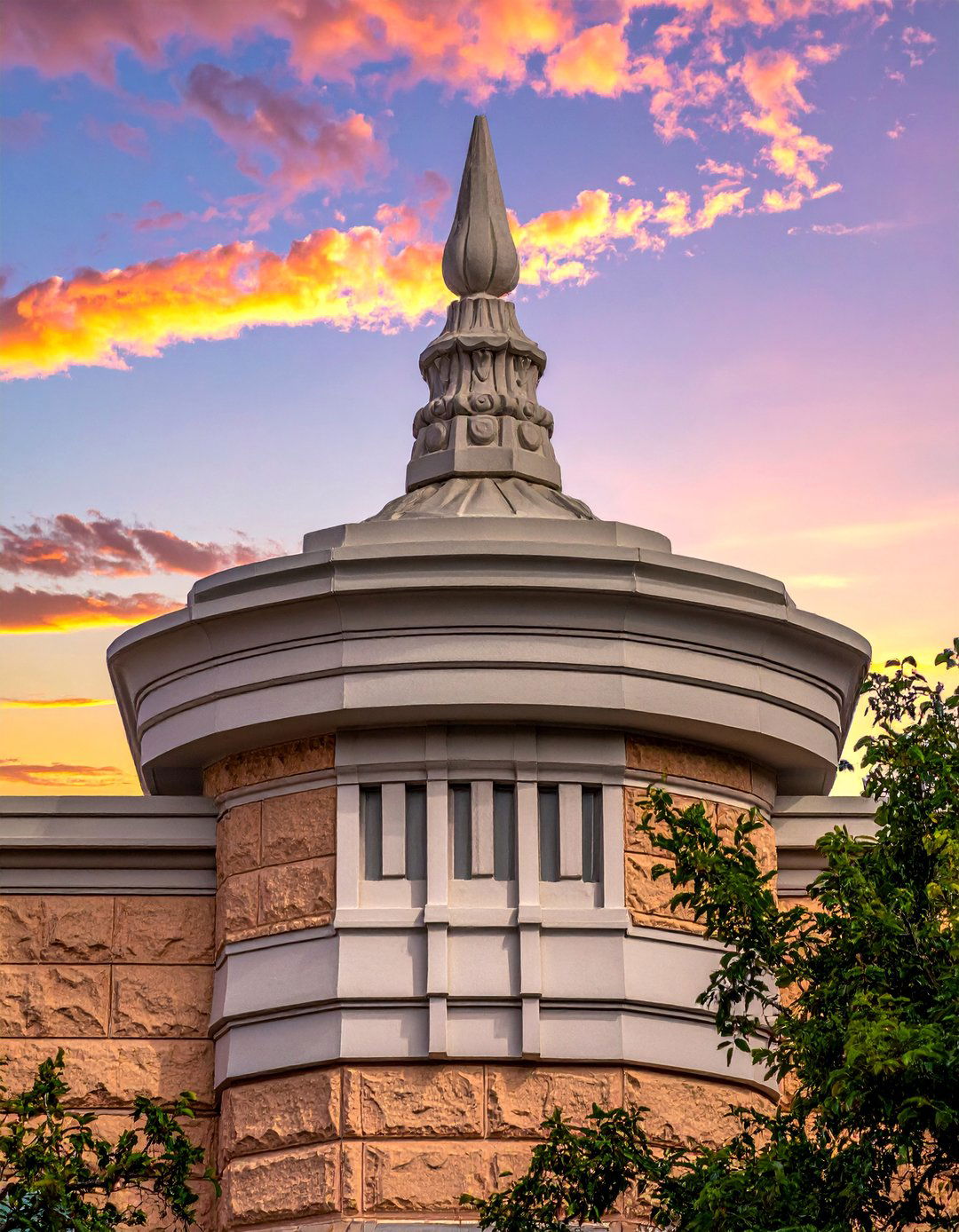
A parapet, a low protective wall along the edge of a roof, offers a prime opportunity for ornamentation on an Art Deco house exterior. Instead of a simple, flat top, the parapet can be embellished with stepped designs, geometric cutouts, or decorative finials. This treatment helps to create a more interesting and dynamic roofline, breaking away from a purely boxy silhouette. Often, the central part of the parapet is raised or features a carved plaque with the building's name or a stylized motif. This transforms a functional architectural element into a key decorative feature that enhances the home's verticality and grandeur.
11. Art Deco House Exterior with Integrated Concrete Planters
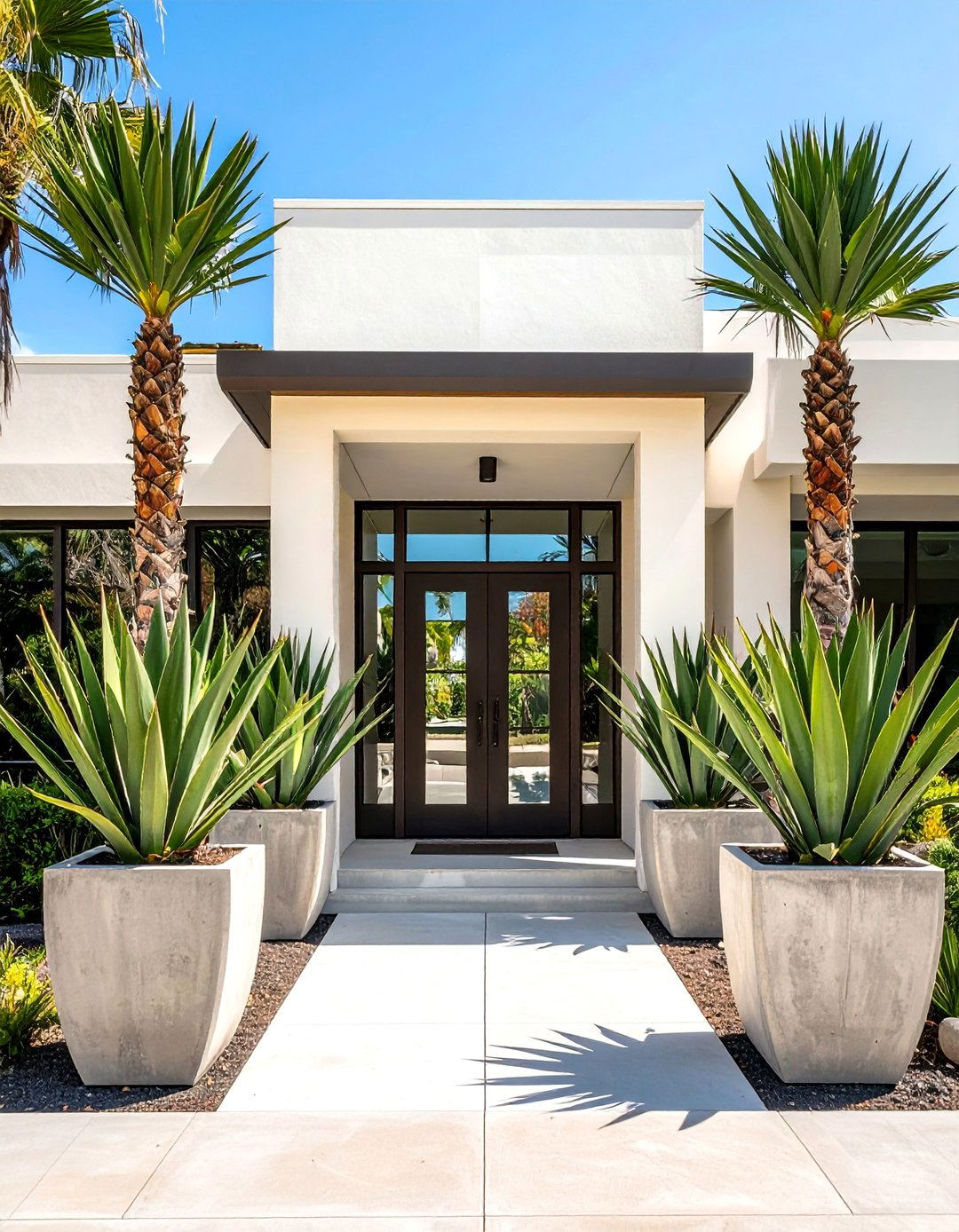
Reflecting the style's emphasis on clean lines and built-in features, integrated concrete planters are a seamless way to incorporate nature into an Art Deco house exterior. These planters are often built directly into the structure, such as along porch railings, flanking the main entrance, or on top of low garden walls. Their form typically mirrors the geometric or curved lines of the house itself, ensuring they appear as a cohesive part of the overall design. Planting them with structured, architectural plants like tall grasses or cascading foliage creates a beautiful contrast between the rigid man-made structure and the soft, organic forms of nature.
12. Art Deco House Exterior with Vertical Pilasters
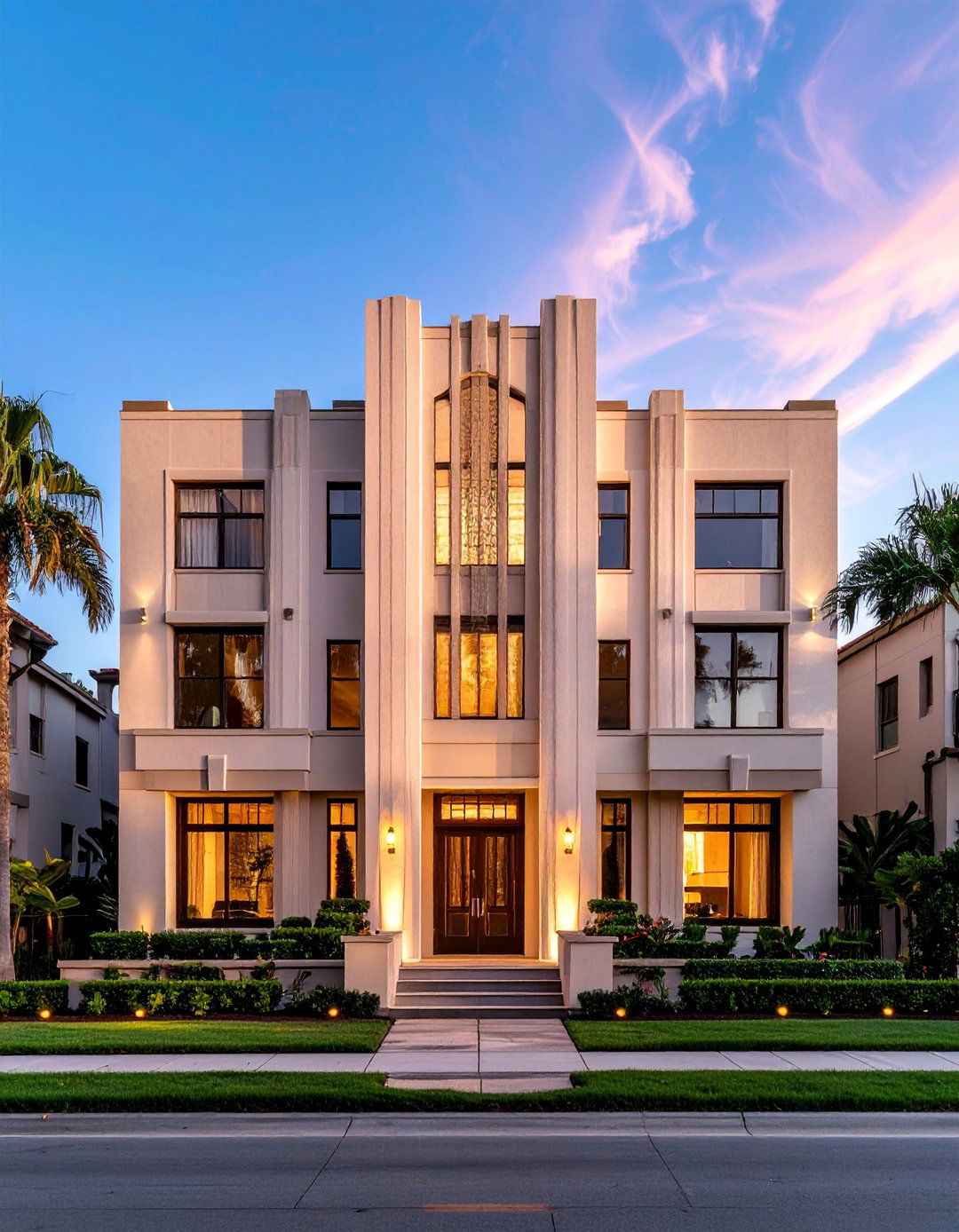
To emphasize height and create a sense of monumental scale, an Art Deco house exterior often features prominent vertical pilasters. These are flattened, column-like projections that are built into the facade, running from the ground to the roofline. They serve to divide the exterior into distinct vertical sections, reinforcing the style's love for symmetry and linear patterns. Pilasters can be kept simple and smooth or embellished with fluting or incised geometric designs for added detail. This architectural element effectively draws the eye upward, making the home appear taller and more imposing, lending it a sense of classical grandeur re-imagined for the modern world.
13. Art Deco House Exterior with Polished Metal Accents
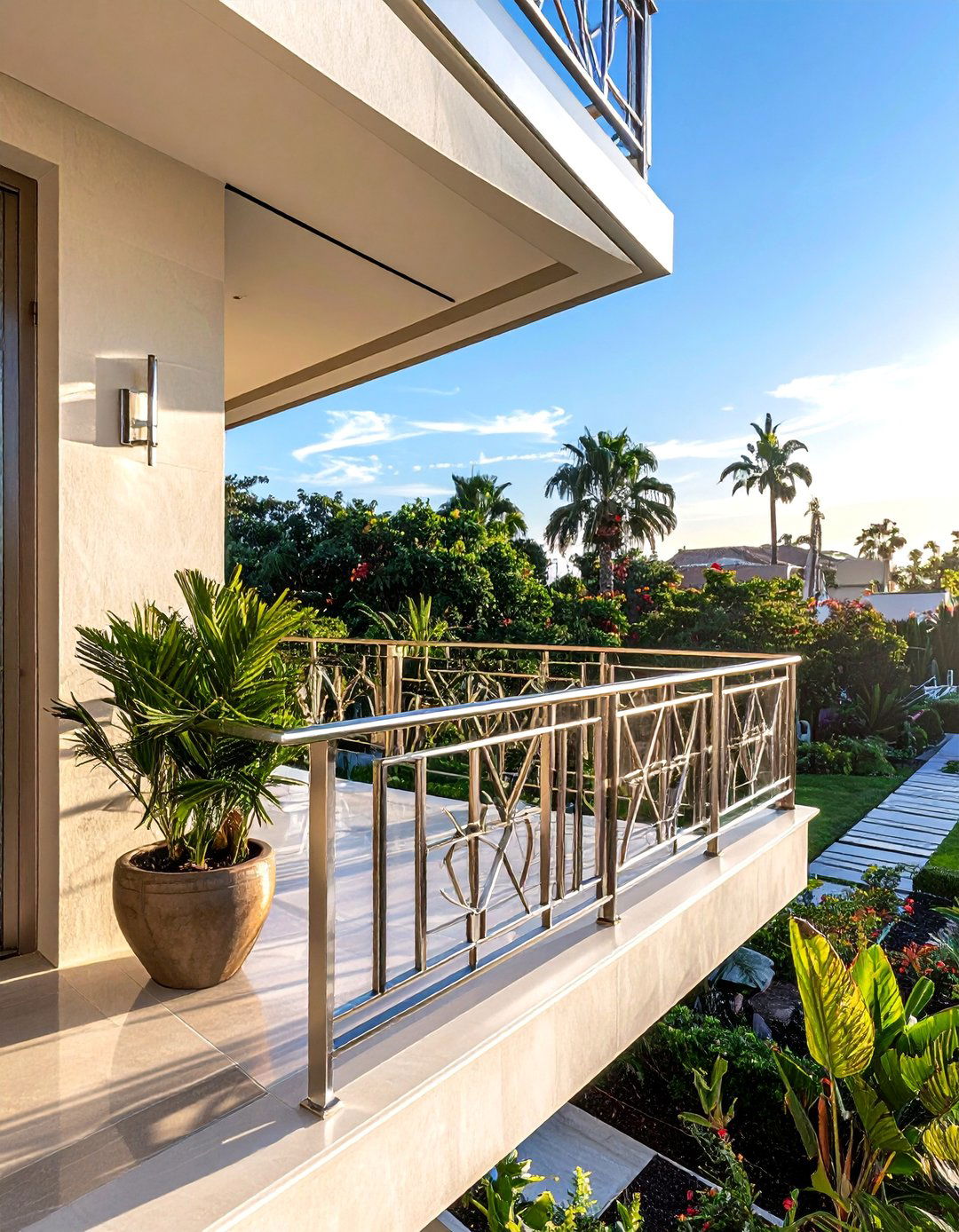
Glamour and luxury are central to the Art Deco aesthetic, and polished metal accents are an essential ingredient for an upscale exterior. Details made from stainless steel, brass, or chrome can be used to elevate the entire facade. Consider a front door with polished metal inlays, sleek metal railings for balconies and staircases, or decorative metal grilles over windows. Even smaller details like house numbers, light fixtures, and mailbox designs in a polished metallic finish contribute to the opulent feel. These shiny, reflective surfaces catch the light and provide a beautiful contrast against matte stucco or stone, adding a touch of Hollywood Regency sparkle.
14. Art Deco House Exterior with Tropical Deco Pastels
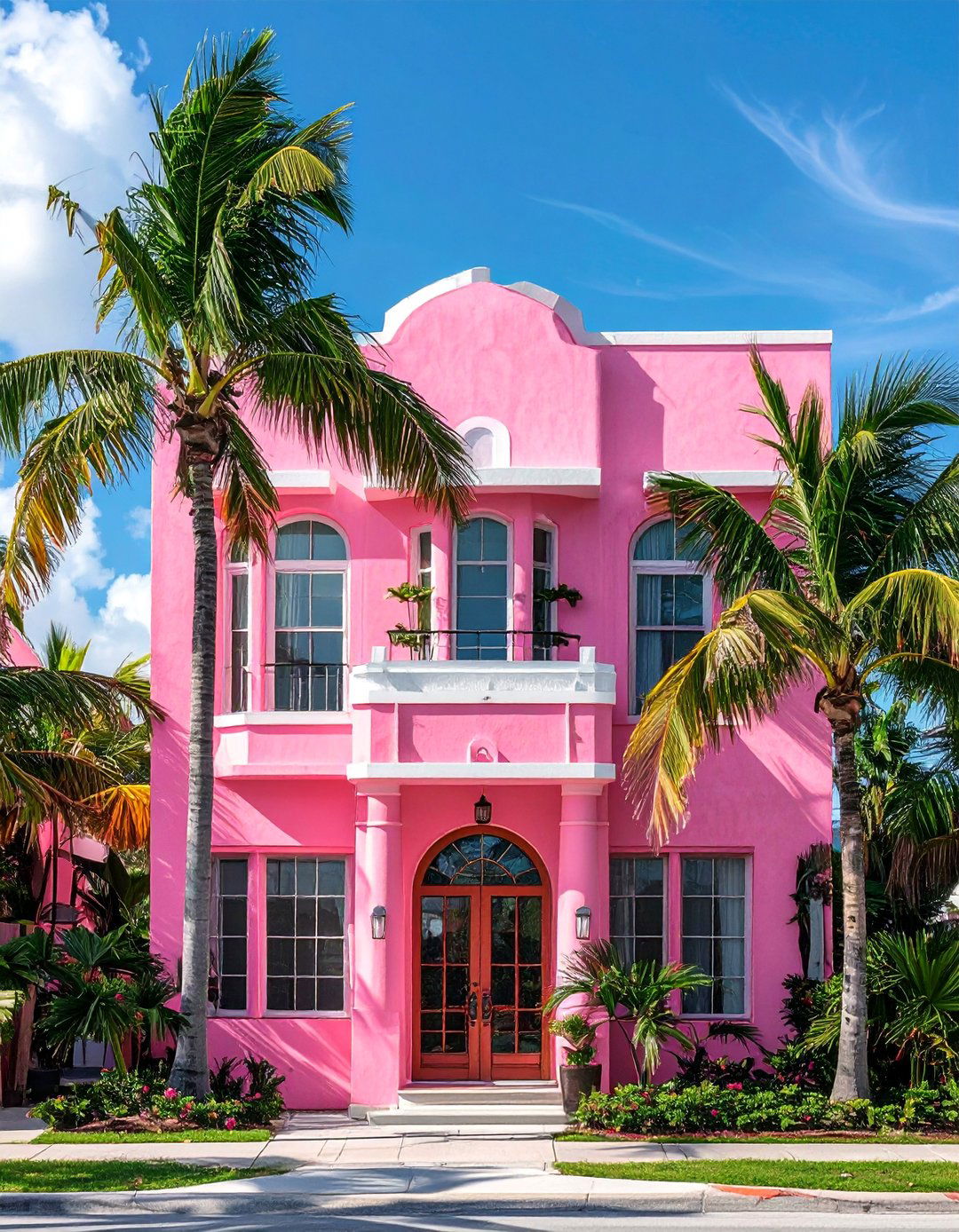
In coastal regions like Miami's South Beach, Art Deco took on a unique regional flavor known as Tropical Deco. This style adapts the classic forms for a sunnier climate, most notably through its vibrant color palette. An Art Deco house exterior in this style uses a base of soft pastel colors like flamingo pink, mint green, sky blue, and buttery yellow. These cheerful hues are often accented with crisp white or cream to highlight architectural details like "eyebrows" over windows, relief panels, and parapets. This playful use of color gives the home a lively, resort-like feel that is both historically authentic and eternally fresh.
15. Art Deco House Exterior with Cantilevered Balconies
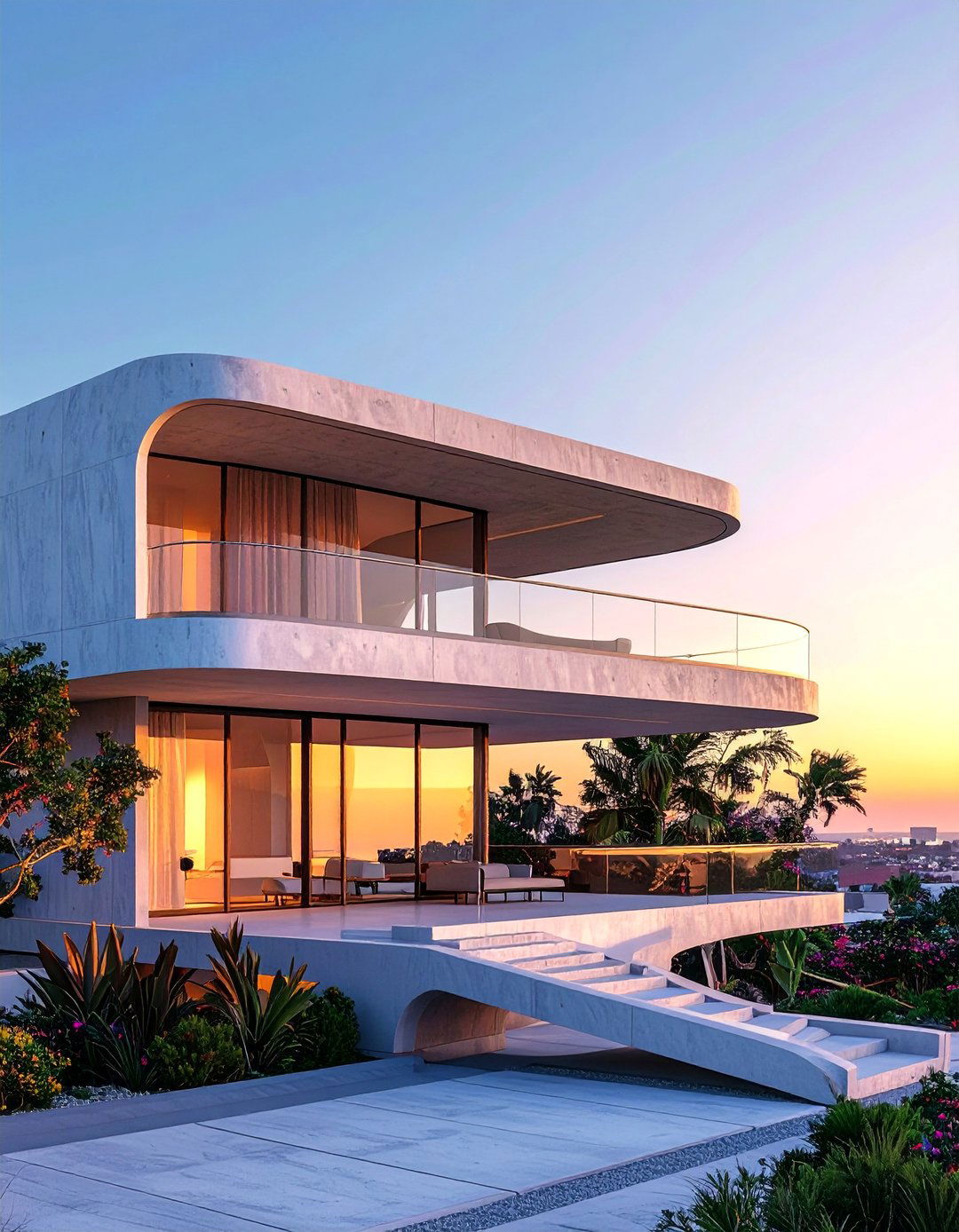
Cantilevered balconies are a hallmark of modern construction that found a perfect home in Art Deco architecture. Extending from the building without visible supports, these balconies enhance the streamlined, futuristic look of the house. An Art Deco house exterior can feature balconies with elegantly curved edges or sharp, geometric angles. The railings are a key decorative element, often crafted from steel with geometric patterns or featuring solid concrete sides that continue the smooth lines of the facade. These balconies not only provide functional outdoor space but also add depth and dynamic interest to the building's exterior, showcasing the era's innovative engineering spirit.
Conclusion:
Art Deco house exteriors offer a rich vocabulary of design elements that blend historical grandeur with forward-thinking modernism. From the rigid symmetry and ziggurat rooflines of its early phase to the sleek curves and nautical touches of Streamline Moderne, the style is defined by its confident geometry, luxurious details, and ornamental flair. By incorporating features like steel windows, sunburst motifs, and bold color contrasts, homeowners can create a facade that is both a tribute to a glamorous era and a timeless statement of sophisticated design, proving that true elegance never goes out of style.

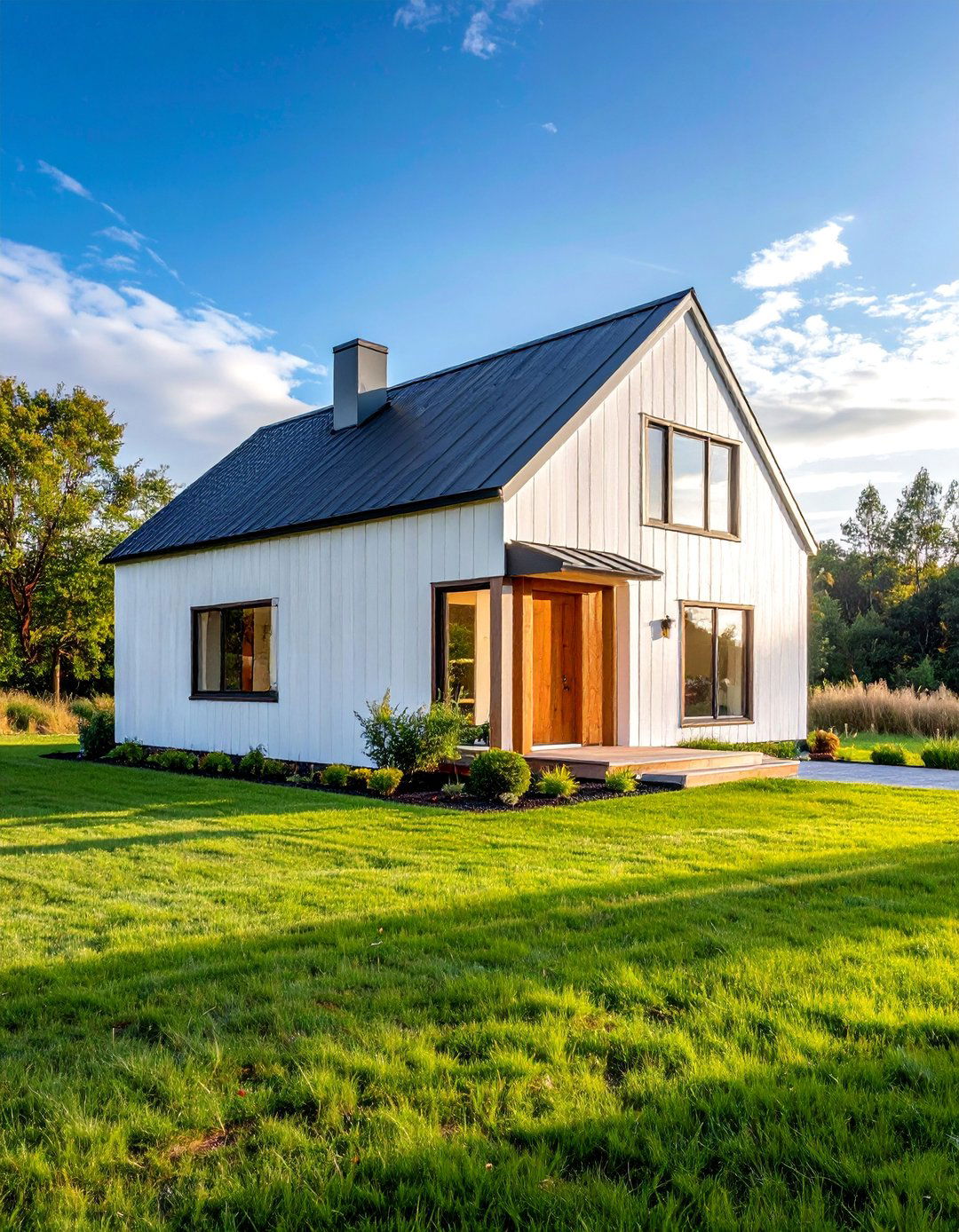
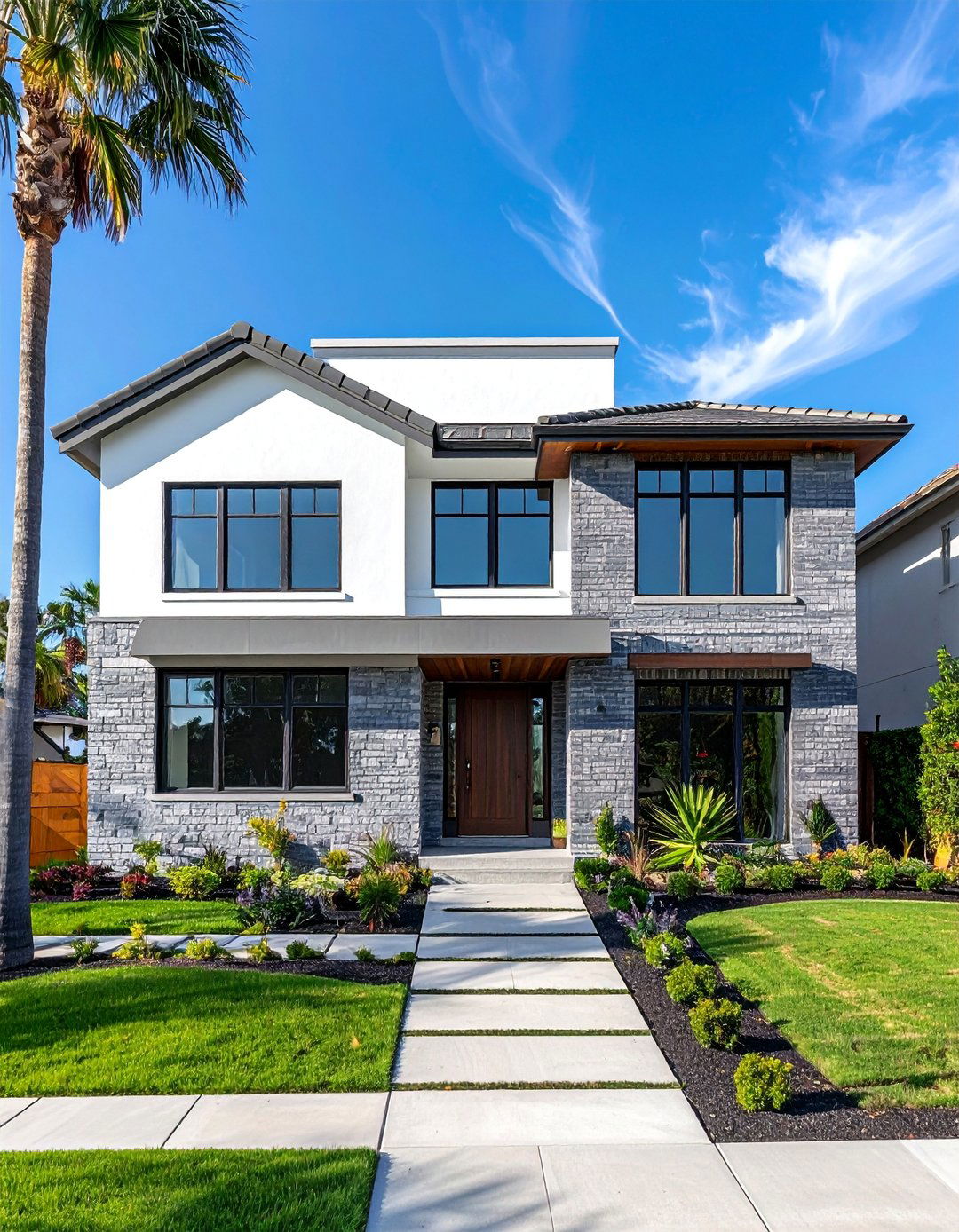
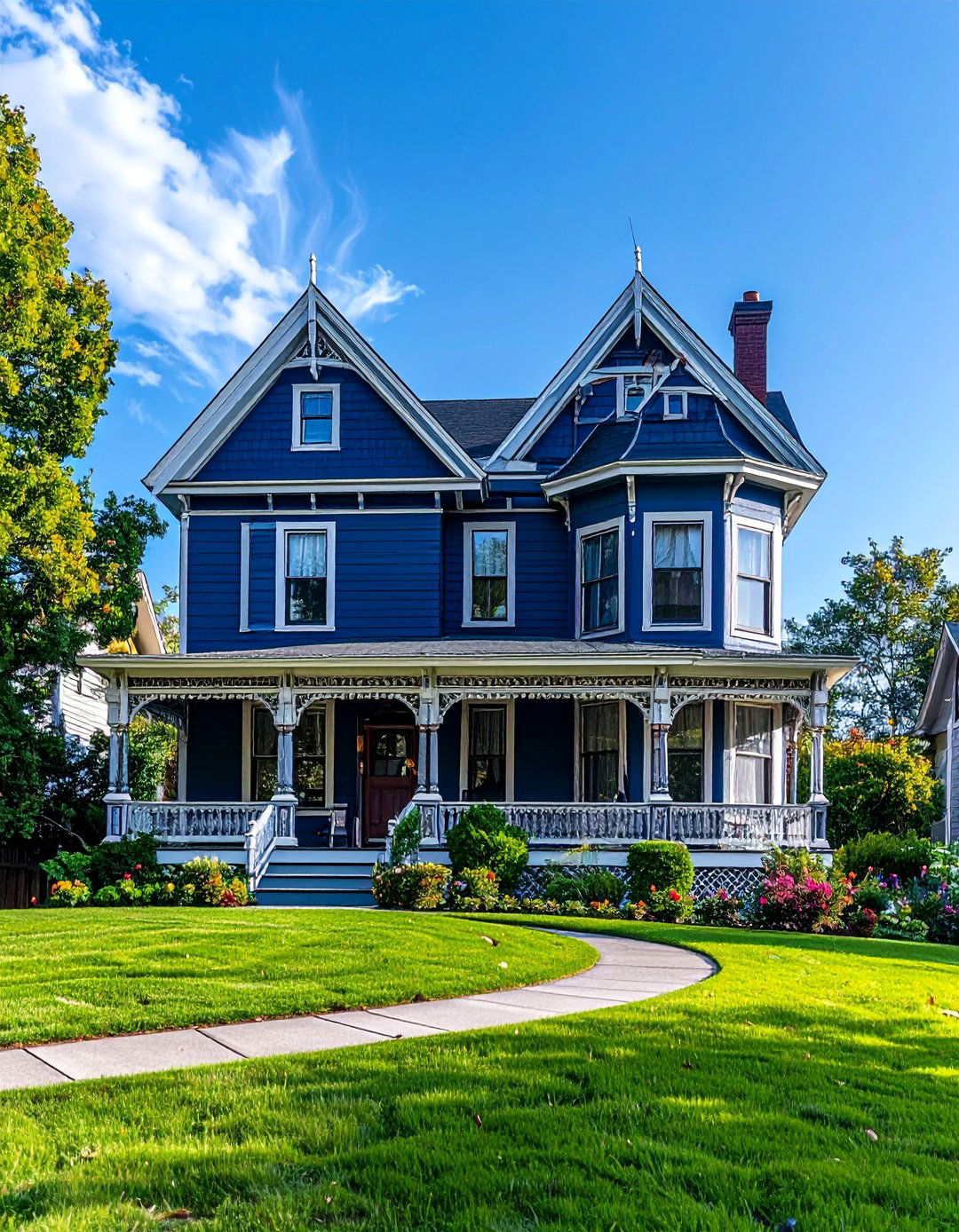
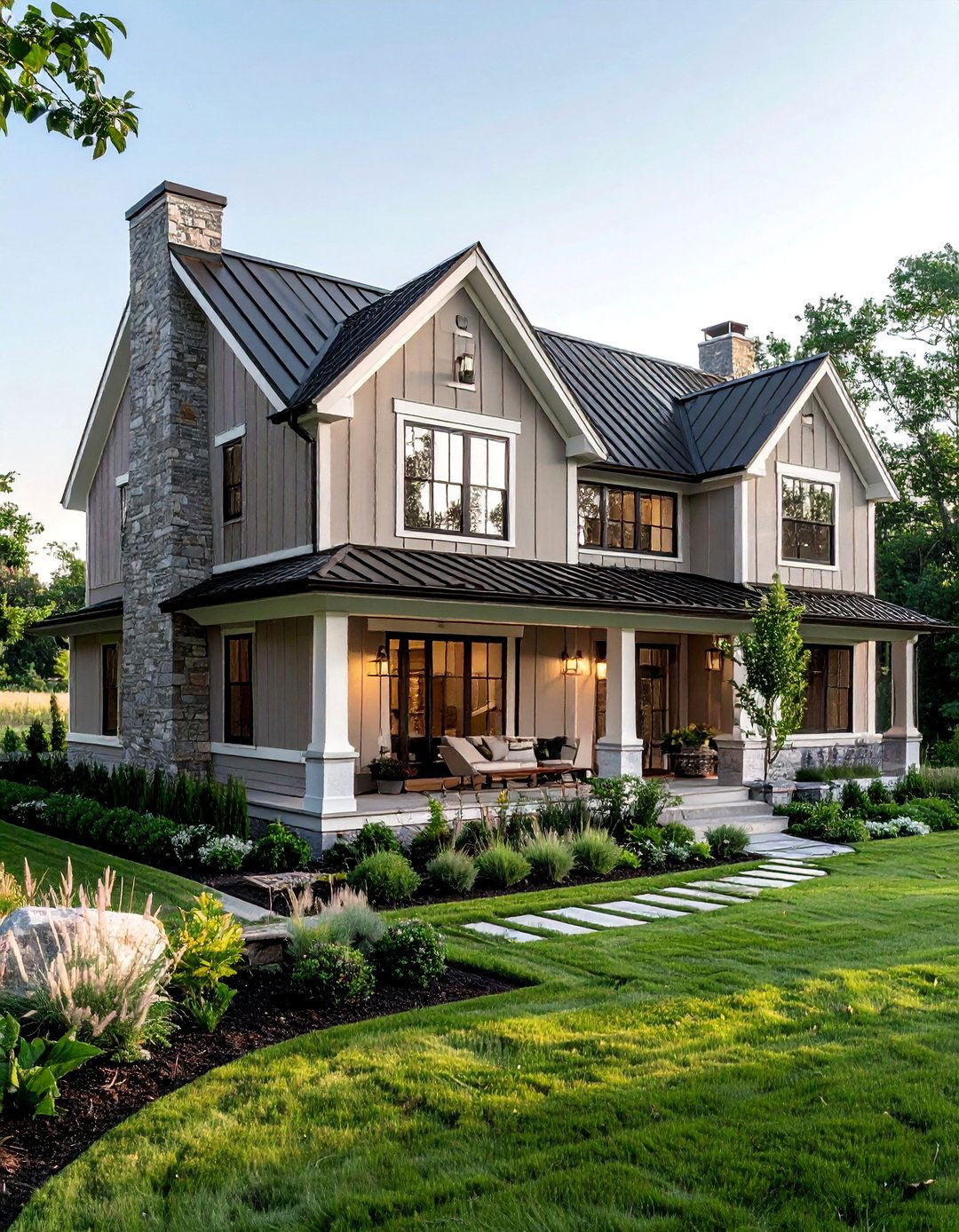
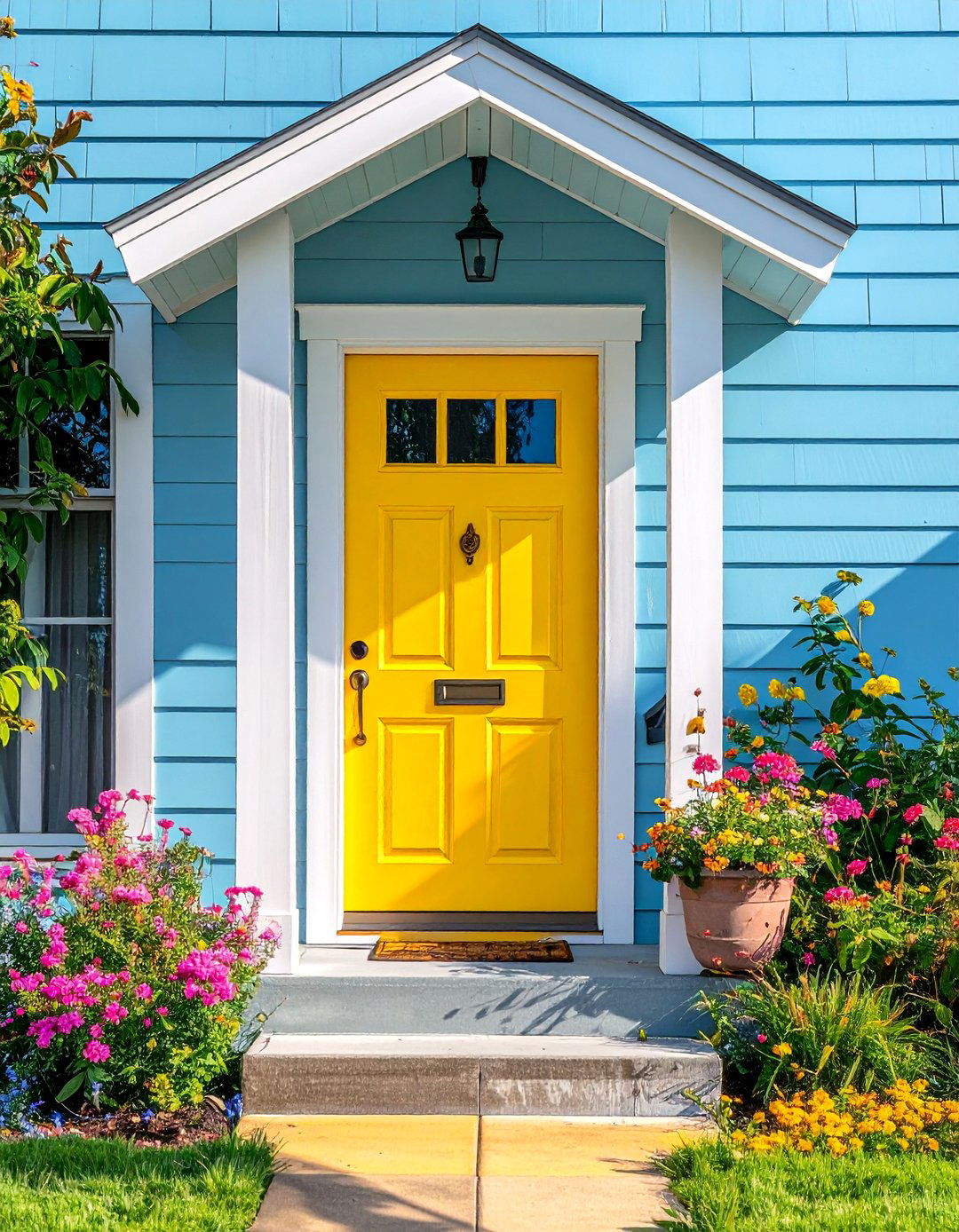
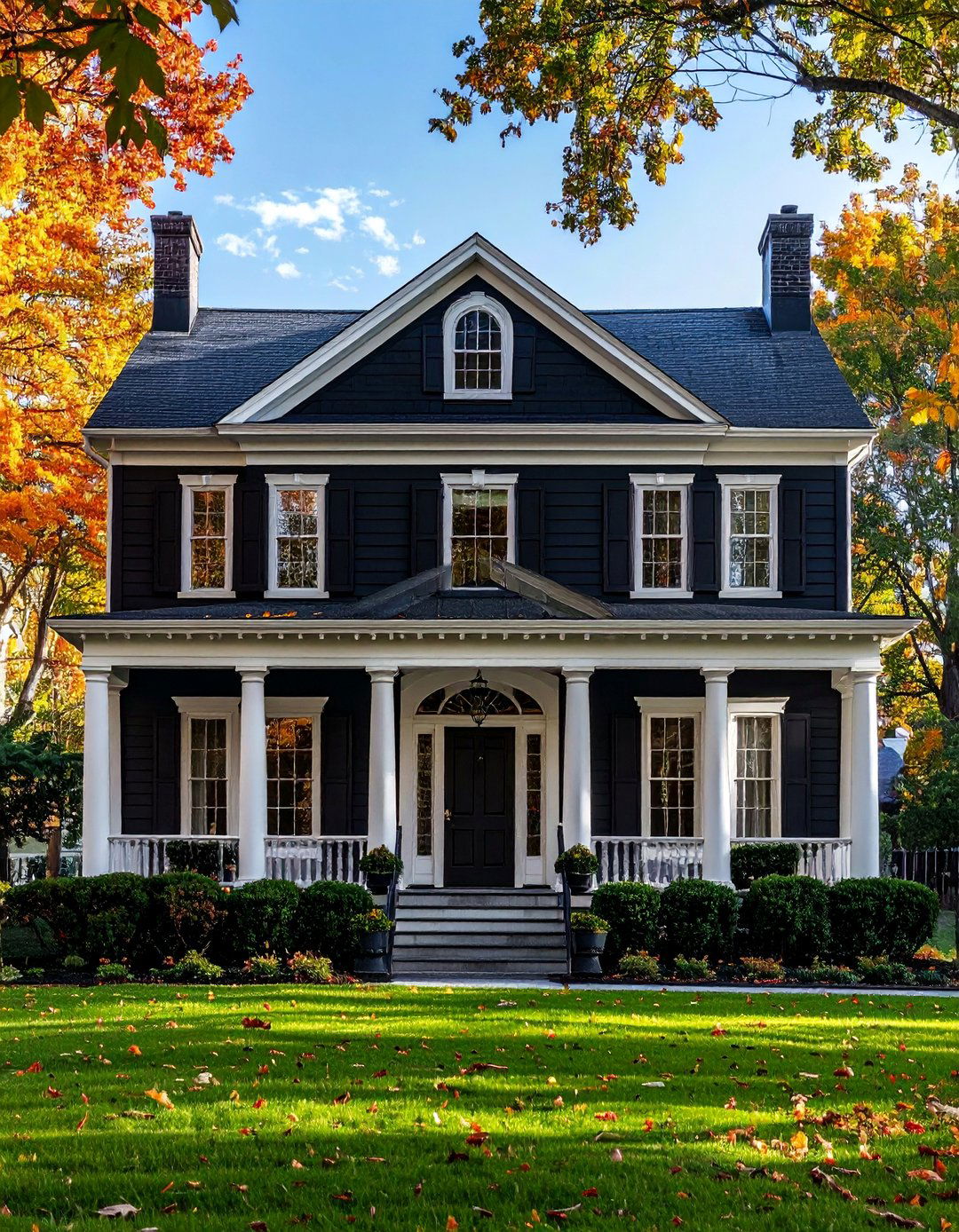
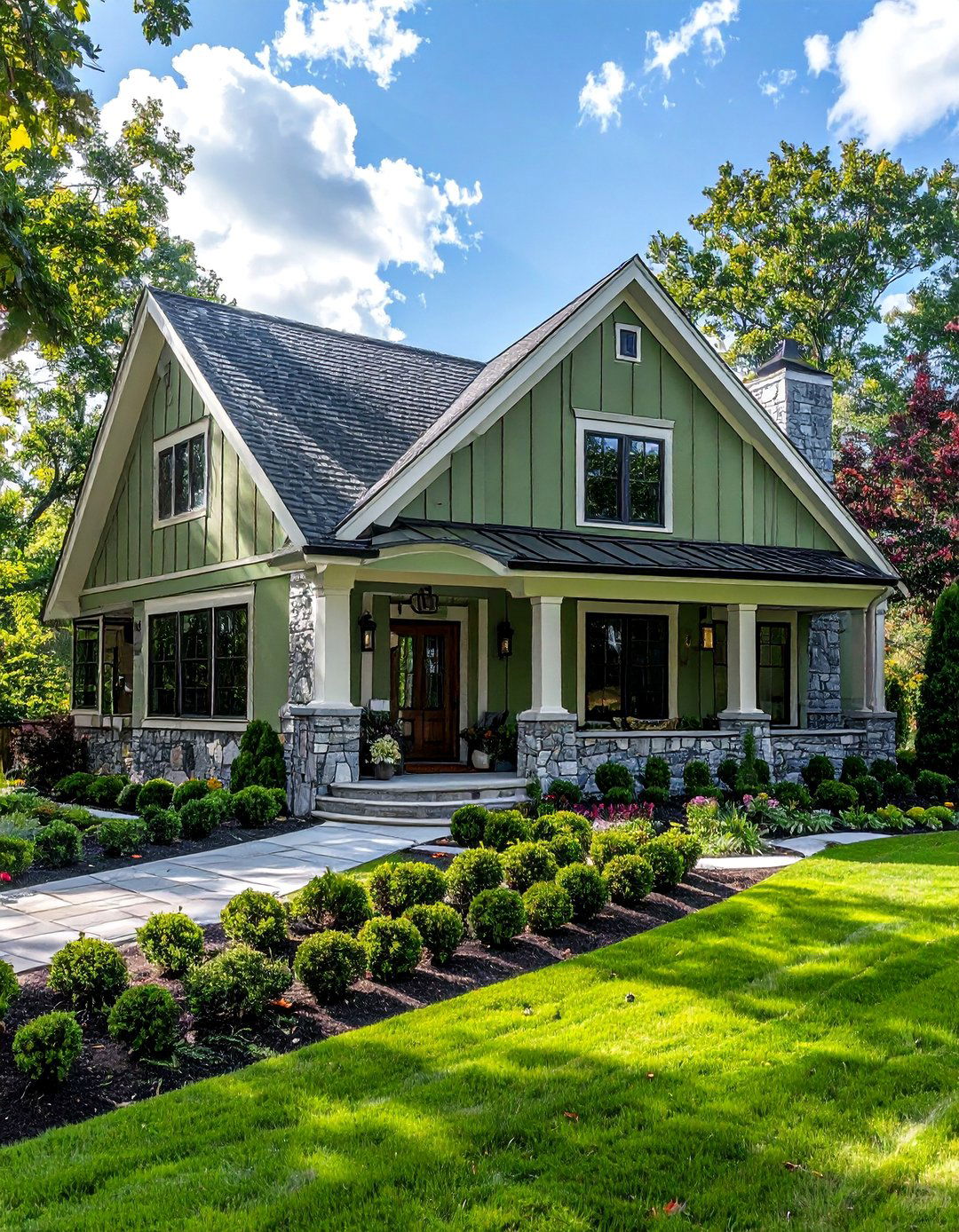
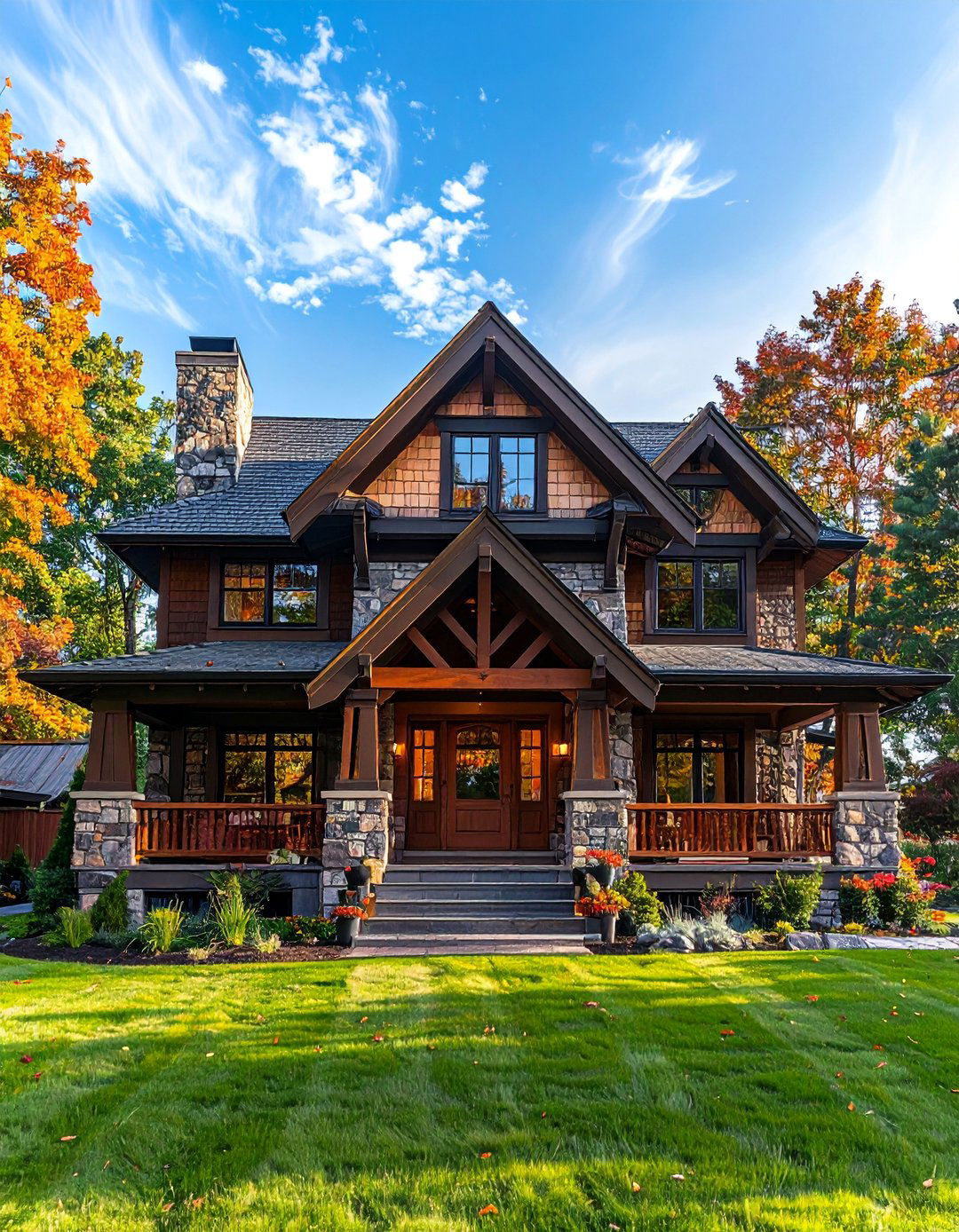
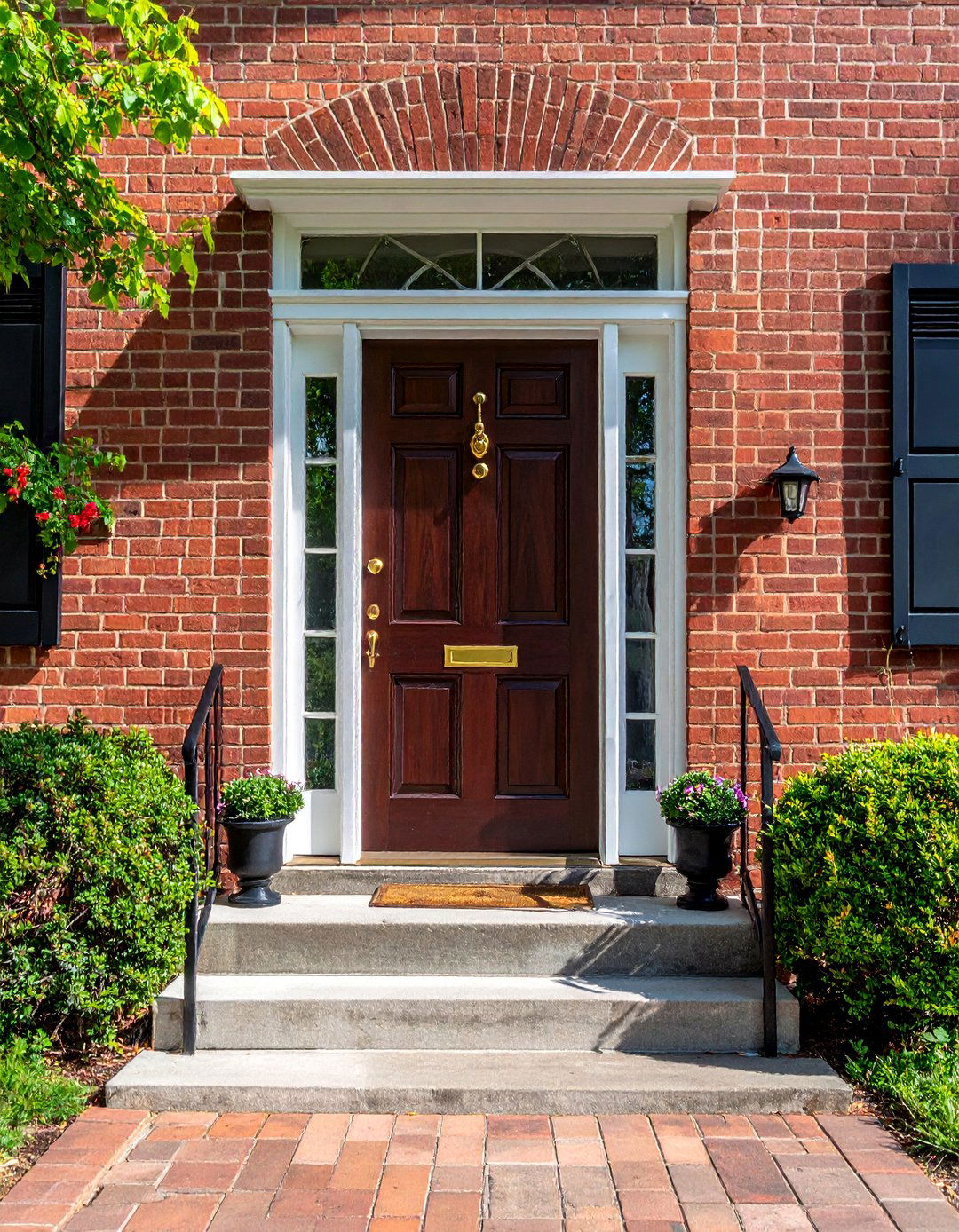
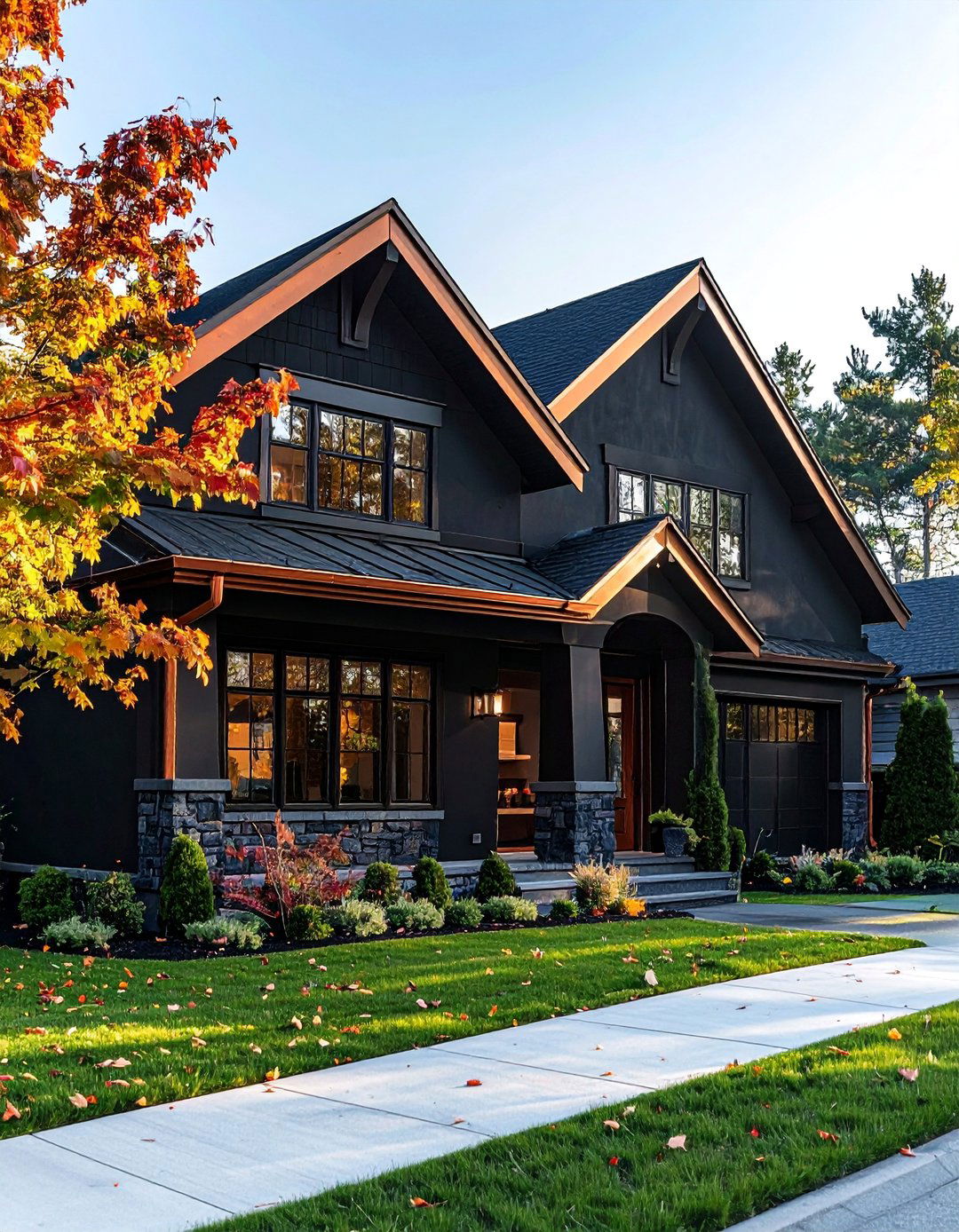
Leave a Reply